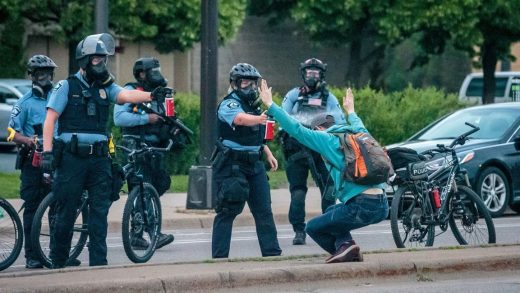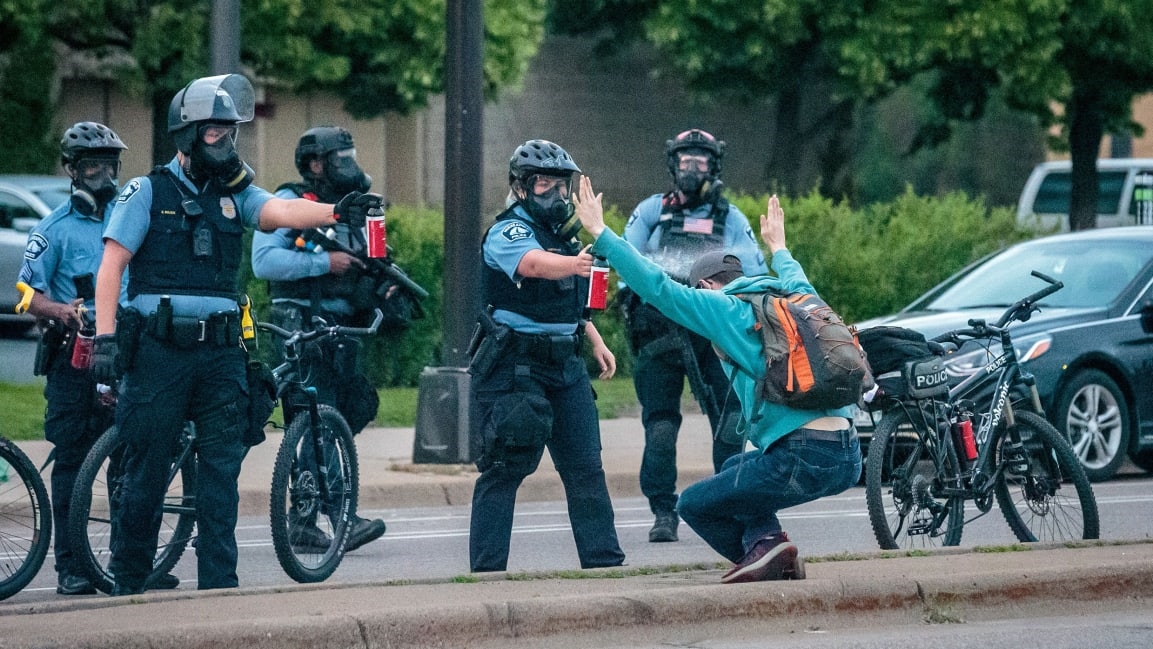Is it time to defund the police?
Five years ago, in the wake of the killing of Michael Brown and other high-profile deaths at the hands of the police, six cities took part in a national program designed to help reform policing, from training in implicit racial bias and how to de-escalate tense situations to new standards for the use of force and early-warning systems designed to identify officers at risk of causing violence. Minneapolis—where George Floyd was killed by police—was one of the cities that participated, but there’s no broader evidence that the reforms helped change officer behavior.
So police reform advocates are asking another question: Is the answer not changing how we do policing, but simply doing less policing, and moving city funding to different programs such as alternative community-based safety systems?
Alex Vitale, a sociology professor at Brooklyn College and the author of The End of Policing, makes the case in a recent op-ed in The Guardian:
The alternative is not more money for police training programs, hardware or oversight. It is to dramatically shrink their function. We must demand that local politicians develop non-police solutions to the problems poor people face. We must invest in housing, employment and healthcare in ways that directly target the problems of public safety. Instead of criminalizing homelessness, we need publicly financed supportive housing; instead of gang units, we need community-based anti-violence programs, trauma services and jobs for young people; instead of school police we need more counselors, after-school programs, and restorative justice programs.
In many cities, the police department’s funding is a huge line item in the budget. In New York, the city pays around $6 billion for its police department annually. Los Angeles pays around $3 billion, nearly a third of the city’s total spending. Chicago spends at a similar level. What if some of that money was redirected into other programs that offered mental health support, healthcare, and jobs?
In Minneapolis, multiple activist groups, including Reclaim the Block, Black Visions Collective, and MPD 150, are now calling for the city to move $45 million from the police budget to other programs for the community. Nationally, Black Lives Matter has called for similar defunding. “We want to reduce law enforcement in our communities,” Black Lives Matter cofounder Patrisse Cullors told Nightline. “The more contact we have with law enforcement, the more death is going to happen with black people.”
When it began, there was some optimism around the police reform program that Minneapolis participated in, the National Initiative for Building Community Trust and Justice. “One of the big pieces of it was an attempt to go big and recognize that a lot of the work needed to be done around changing police culture,” says Jesse Jannetta, a senior policy fellow at the nonprofit Urban Institute, who helped analyze the intervention in 2018. “This was something bigger than things like, for example, let’s have all the officers wearing body cameras, or let’s think about different civilian oversight mechanisms. Rather, let’s try and do a lot of things to change the mindset and also the within-the-department policy structure of policing.”
It’s easier, of course, to get police departments to support the idea of reforms than more fundamental changes that involve shifting funding to programs outside police departments. And while Jannetta himself hasn’t given up on the idea of reform, he acknowledges it may not be enough because the problems in the system run so deep. In the South, policing grew out of a system designed to control slaves, and much of the current system in the U.S. today was put in place when Jim Crow laws were in effect.
The bias in the criminal justice system is staggering. One review of millions of traffic stops found that black Americans are nearly twice as likely to be pulled over than white Americans, though white people drive more often (similarly, black cyclists and pedestrians are also more likely to be stopped by police). Police are more likely to target black people for “suspicion of crime.” Black people are more likely to be charged for drug crimes than white people, even though white people use and sell drugs at similar rates. Thirteen percent of the U.S. population is black, but 27% of those who are arrested are black. Black people are more likely to be detained before trial than white people, and nearly six times more likely to be incarcerated. A 2015 study found that an unarmed black American is more than three times more likely to be shot by the police than an unarmed white American.
An Urban Institute report on how to address structural racism, from how to close gaps in income and wealth and improve education to ending punitive policing, suggests that one solution may be what’s called “invest-divest”: Take money from police budgets and put it toward other community resources instead. Activists pushed for this in Chicago, where the No Cop Academy group campaigned against a $95 million police training academy, arguing that the city should spend the money on education, jobs, and housing. (Ultimately, the academy got the city’s approval to move forward, but the activists are still campaigning for similar shifts in budgets.) In other cases, activists say that more funding should go to trained conflict mediators and others who can help reduce violence outside of the police.
There’s been an increase in civilian anti-violence work, “whether it’s violence interrupters, or street interventionists, or gang outreach workers,” says Jannetta. “There is this increasing field of people and they’re out doing public safety work. They’re preventing retaliation. They’re intervening in conflicts to tamp them down. Sometimes they’re going out and engaging with people that they know might be at the highest risk of shooting and being shot, and starting by building rapport, and then trying to perhaps get them involved in services or other things that could lead them on a different trajectory.”
It’s a difficult time to increase funding for these programs, as cities reeling from the COVID-19 pandemic have budget shortfalls. There’s a chance, instead, that some of the programs may be cut, while police departments remain largely intact. But the pandemic had also started to provide some evidence of what less police enforcement might look like, as police departments tried to avoid bringing new detainees into jails where COVID-19 would spread. “Even before what happened in Minneapolis to George Floyd, there were people saying, could we potentially lock some of these things in as the new normal?” Jannetta says. Now, as tight budgets force cities to make choices, they could move in a different direction.
“The COVID situation is damaging the country economically and socially in a lot of ways,” he says. “We were already in a situation where we were going to have to be doing a lot of rebuilding from that. Since we have to do that rebuilding, it’s this question of, what do we want to build?”
(21)



